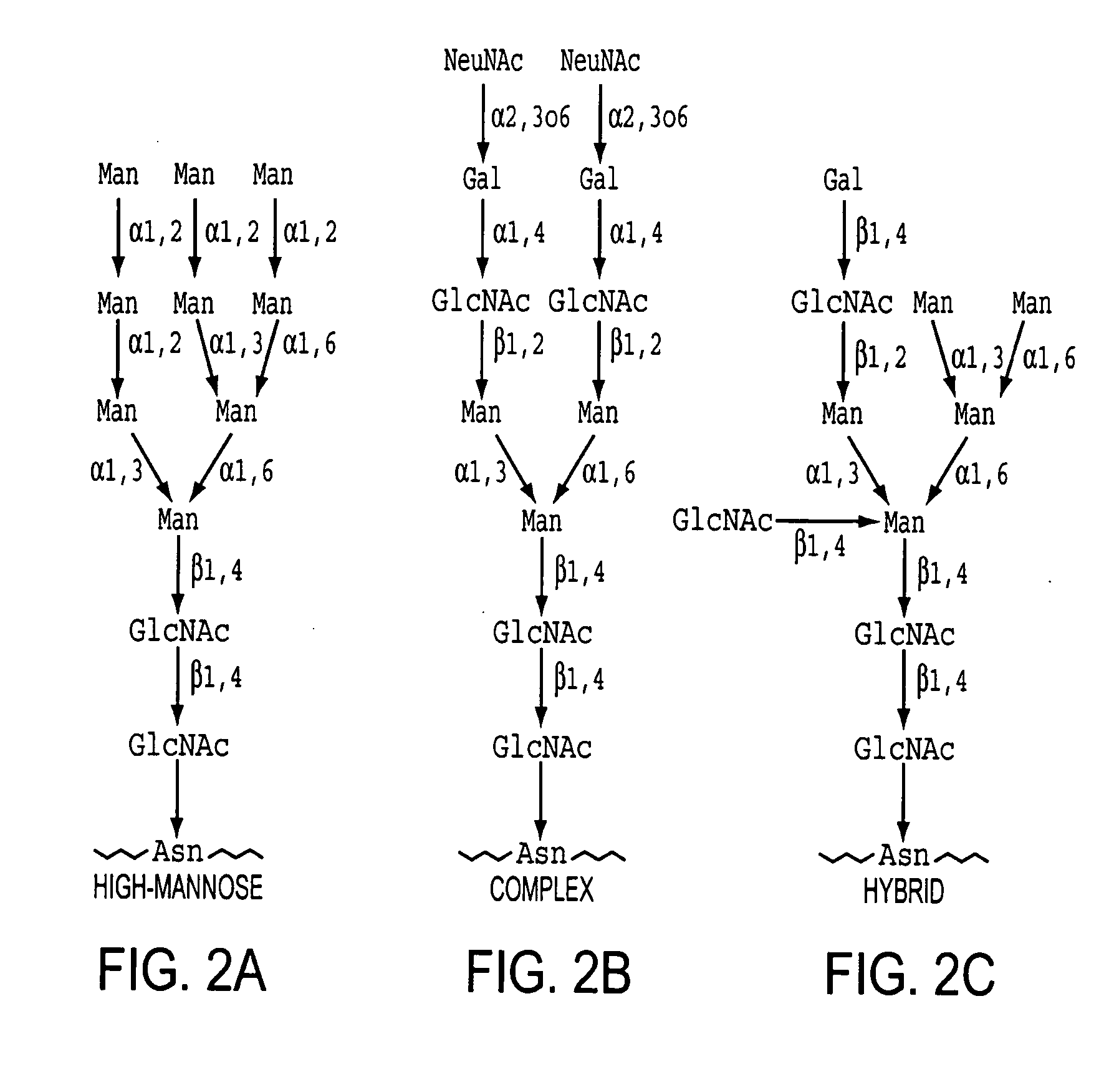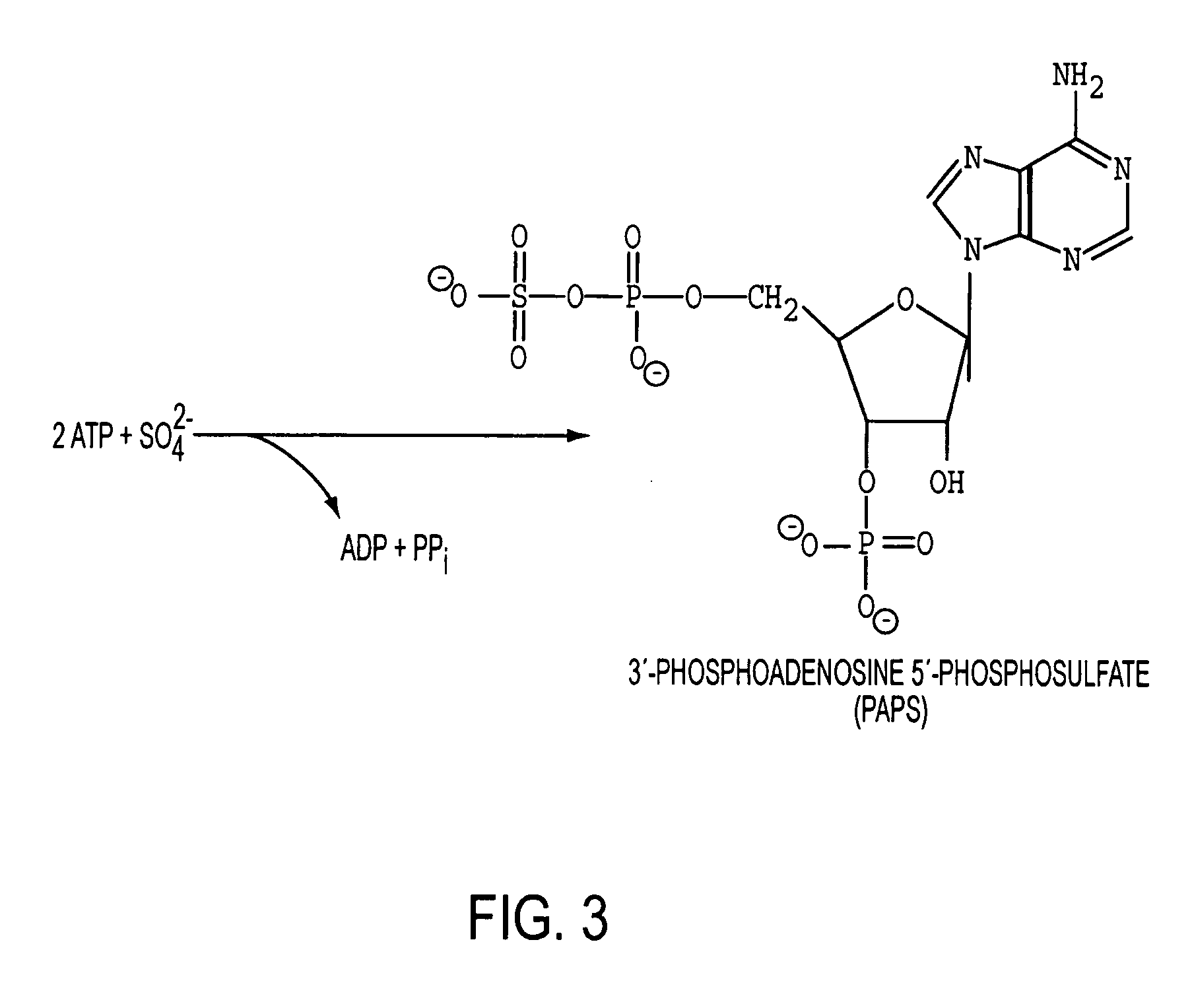Homogeneous populations of molecules
- Summary
- Abstract
- Description
- Claims
- Application Information
AI Technical Summary
Benefits of technology
Problems solved by technology
Method used
Image
Examples
example 1
Laminin Polypeptides
[0217] Laminin is a protein found in the basement membrane, and consists of three peptide chains that are linked by disulfide bonds. There are several different types of laminin that vary in molecular weight. See, e.g., Miner et al., The laminin alpha chains: expression, developmental transitions, and chromosomal locations of alpha1-5, identification of heterotrimeric laminins 8-11, and cloning of a novel alpha3 isoform, J Cell Biol 137:685-701 (1997); Teller et al., Interactions between laminin and epithelial cells in intestinal health and disease. Exp. Rev. Mol. Med. 28 September 2001 (available on the internet at ; and Simon-Assmann et al., The laminins: role in intestinal morphogenesis and differentiation. Ann NY Acad. Sci. 859:46-64 (Review) (1998).
[0218] Unless indicated otherwise, Laminin type 1 from Engelbreth-Holms-Swarm (EHS) sarcoma grown in mouse was used in the Examples. Laminin type 1 consists of three polypeptide chains: alpha 1 (335,732 Da), bet...
example 2
Deglycosylation of Laminin
[0220] Deglycosylation: 1 mg of laminin stock solution was mixed with 6.25 μl of 20% SDS and 31.25 μl of 2 M DTT, mixed well and incubated at room temperature for 30 minutes. Then, 65 μl of 14% Triton X-100 was added and the protein solution was mixed well. 5 μl PNGase F (New England Biolabs) was added and the protein solution was mixed well and was left at 4° C. for 48 to 72 hours.
[0221] Purification: 2 ml of 50 mM Tris pH=8, 0.1% SDS buffer was added to 1 ml of deglycosylated laminin solution. The protein was concentrated by centrifugation at 3,000×g using a filter having a molecular weight cut-off (MWCO) of 100 kDa MWCO (Amicon, Beverly, Mass.) until the sample volume was between 0.5 to 1 ml. This protocol was repeated two more times, with 2 ml buffer being added each time. After the last concentration cycle, the protein concentration was adjusted to 1 mg / ml if needed by adding 50 mM Tris, 0.1% SDS buffer to the solution.
[0222]FIG. 4A is an image of a...
example 3
Reduction and Alkylation of Laminin
[0223] Reduction and Alkylation: 100 μl of 20% SDS was added to the 1 ml of 1 mg / ml deglycosylated laminin solution and the sample was incubated at room temperature for 1 hour. Then, 40 μl 200 mM tri-n-butylphosphine (TBP) in isopropanol was added and the sample was vortexed for 10 seconds. Then the sample was left in a vortexer 1 hour. After the addition of the TBP the sample became cloudy but, by the end of the incubation, the sample solution was clear. Then, 100 μl 1 M iodoacetic acid pH=7 in 25 mM phosphate was added to the protein sample, which was incubated for 1 hour at room temperature.
[0224] Purification: 2 ml of 50 mM Tris pH=0.8, 1% SDS buffer was added to 1 ml alkylated laminin solution. The protein was concentrated by centrifugation at 3,000×g using a filter having a 100 kDa MWCO (Amicon) until the sample volume was between 0.5 to 1 ml. This protocol was repeated two more times, with 2 ml buffer being added each time. After the last ...
PUM
| Property | Measurement | Unit |
|---|---|---|
| Atomic weight | aaaaa | aaaaa |
| Molecular weight | aaaaa | aaaaa |
| Reduction potential | aaaaa | aaaaa |
Abstract
Description
Claims
Application Information
 Login to View More
Login to View More - R&D
- Intellectual Property
- Life Sciences
- Materials
- Tech Scout
- Unparalleled Data Quality
- Higher Quality Content
- 60% Fewer Hallucinations
Browse by: Latest US Patents, China's latest patents, Technical Efficacy Thesaurus, Application Domain, Technology Topic, Popular Technical Reports.
© 2025 PatSnap. All rights reserved.Legal|Privacy policy|Modern Slavery Act Transparency Statement|Sitemap|About US| Contact US: help@patsnap.com



